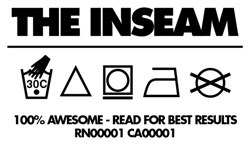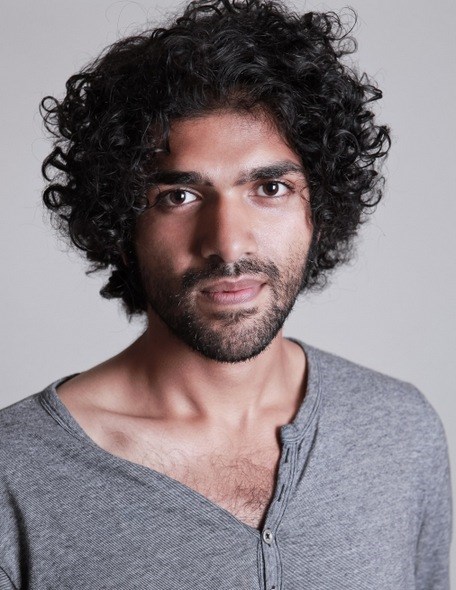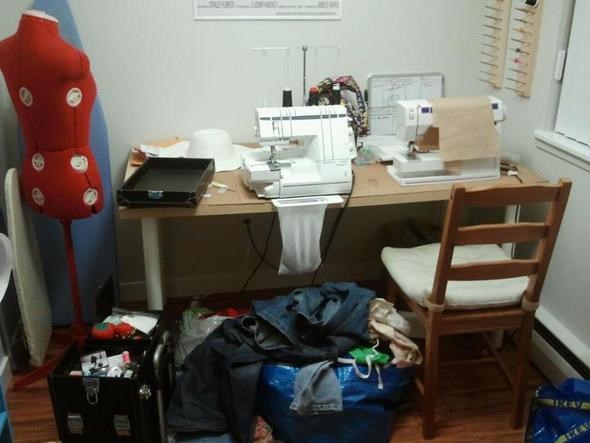 |
Vancouver is home to a thriving fashion industry made up of individuals committed to its growth and success. Get to know these personalities in The Inseam and discover what makes the Vancouver Fashion scene so awesome. Every month, The Inseam’s Eco Edition focuses on the innovators that shape the green movement in local fashion. |
 Photo courtesy of RISE
Photo courtesy of RISE
I’m always intrigued by innovative business models that address sustainability and behaviour change. When it comes to clothing most people are very specific about what they purchase and wear, and the decisions are based on looks and style. Not too many people think about the impact of their purchasing decision and the full life cycle of their clothes.
But there are innovators who are trying to change the business of clothing so that individuals can still make decisions based on style, with the eco or sustainability benefits just imbedded in the product. One new, Vancouver-based example of this is RISE and its creator Sayan Sivanesan. RISE is a brand, symbolised by a red feather embroidered on each of its pieces, working to create a mass market for second hand and upcycled clothing.
Jessica McIlroy: Tell me a bit about the work and school you are balancing right now.
Sayan Sivanesan: I’ve just finished my 3rd year at UBC, of a 4 year marketing degree. I’m also working with Public Outreach, an organisation that runs fundraising campaigns for charities such as Doctors Without Borders, UNICEF, and Amnesty International. I’ve been doing that for about two years. About a year and half ago is when RISE started.
JM: And is RISE something that started out of your schooling?
SS: Yeah sort of. During my first marketing class we had to keep a marketing-related blog. I wanted mine to analyse how marketing could be used to reduce consumption instead of promoting it.
JM: And this was consumption in general.
SS: Right. Over consumption and disposal. During that process I thought a lot about branding and kept coming back to the power of brands. So much can be encompassed in one word or even symbol. I also thought about how environmentalists have an uphill battle trying to promote actions, raise awareness and get knowledge to individuals. While marketers just have to flash a symbol. So why not have a symbol that represents being more resourceful and thrifty.

JM: When did you build the connection to clothing?
SS: Once I had the idea about using a symbol I tried to figure out a powerful way to incorporate the idea with consumption. I realised that clothing is an important area; our clothing and fashion is how we inform people of who we are without speaking. Our most used form of self expression. So the idea became to build a brand around expressing what you believe through clothing.
JM: The choices that people make to consciously wear a logo or certain styles.
SS: Exactly. I started to think about my own choices. I had never shopped thrift before, so I looked at what had held me back from shopping at Value Village. I started to go through my own ideas about why I hadn’t, and realised they were unfounded. I asked all my friends and realised that they all thought thrift was weird.
My philosophy is that awareness inspires very little action, but actions inspire convictions, which reinforce the actions. We do something then look to justify it after. So we need to get people to buy 2nd hand clothes, and they will justify it to themselves. Create a cool brand that is popular and focus less on preaching. We need to break down the barriers around why people don’t shop thrift just by using the product itself.
JM: So not focusing on communicating all the “why”.
SS: yeah, just get them to do it, making it something everyone wants to do. I kept thinking in my head of what that brand could be. I’ve always enjoyed mythology, and the mythology around the Phoenix, so it all came together.
JM: The red feather of the Phoenix, the idea of rising from the ashes, and the names of the lines (Rebirth and Renew). So this all happened before there was any connection to designers.
SS: Yes, last January.
JM: Was it all a school project, or independent from your schooling?
SS: Independent
JM: So then how did designers come into the picture?
SS: I’d been building the idea in my head for a long time, and realised that in order for it to work it can’t be perceived as some 20 year old kid’s side project. I had to start with a bang, or not start at all. It will really only work if it is cool and has huge a following, creates a trend.
I kept talking to my friends about the idea and every time I told someone they were super encouraging. The idea is pretty simple really, it comes down to the red feather, a simple concept that everyone gets. So I started to try to put a team together. I knew a lot of good people through Public Outreach. While fundraising you face a lot of rejection; only people that truly care, have passion, and resiliency can do it. Is attracts a lot of artsy people. So Annie heard about the idea through Errol who does all the recruiting for PO. She went to design school, we talked, and she was interested.
Last December I flushed out the idea more in a business plan and started to look for support. I then got the idea of the two lines, Rebirth and Renew. Annie would do Rebirth, reworking and upcycling clothes and using discarded textiles. And then I found Leslie for Renew. Her responsibility is to procure clothing, build a network of people, and get the donations that are needed. She keeps what she wants for Renew, which is sold as is, and passes the rest to Annie.
JM: You had the launch event, and are starting to build a bit of awareness, what is the next stage? Where are you at?
SS: The point of the launch was to go all out and show people that we are very serious. To have people walk out thinking it was impressive.
Now the objective is to build a team, a core team of 4 or 5. We need more support for Annie. She has been disappointed she hasn’t been able to design more clothes as she has been managing all the other designers. She is super passionate about her art.
And I need more people to help with marketing, financing, and accounting. The website is now up so we can start doing online sales whilst simultaneously promoting through social media. And hopefully get in one or two retail stores by August.
JM: Are you getting some good responses?
SS: Yeah, a few people are interested. We will be doing some pop up markets in the summer too, build up momentum and start doing a lot on campus in September.
JM: Is there a target customer demographic? Is it students and 20-somethings or just anyone and everyone?
SS: Really anyone, but I guess the 20 – 35 range.
JM: And obviously male and female.
SS: Yes.
JM: So there is a lot of business development that needs to happen, is there any clothing currently being made?
SS: The designers are creating new collections for October to do an event for Fall/Winter.
JM: Did you sell some pieces at the launch, are you getting sale enquiries?
SS: We sold around 50 pieces, about 1/5 of the collection. We sold more of the Rebirth stuff than I thought we would. It was tough, I didn’t know what to do for pricing. I put what I thought was fair for the Renew pieces, what I would pay for a second hand article. For Rebirth, I put it in Annie’s hands. It had to be priced high enough so that people still equate it with quality. It makes the brand look better. Plus the pieces deserve to be at a higher price because a lot of work went into it. At the launch we got a lot of different feedback. We need to still think about it and look at who we are marketing it to.
We want to market the pieces to people who don’t currently shop thrift. Their willingness to pay is high, and they may only be interested if prices are higher. But at the beginning, the core support aren’t willing to pay that much because they already shop thrift.
JM: I’m interested to know how you deal with size. Is there a range? Are the designers conscious of pieces covering a range of sizes?
SS: Basically we came up with size profiles of what is possible, then looked at making sure a ratio of the collections covered each size range.
JM: Does it create difficulties.
SS: No, making things smaller is very easy, and then we have a lot of source materials to make things in any size.
JM: Great, I’ll be watching to see how RISE grows.
SS: Keep an eye out for red feathers around town, I saw my first last Friday, someone was wearing a red feather piece downtown!
For more information on RISE see their website, facebook page, or follow them on twitter @RISEupcycling


